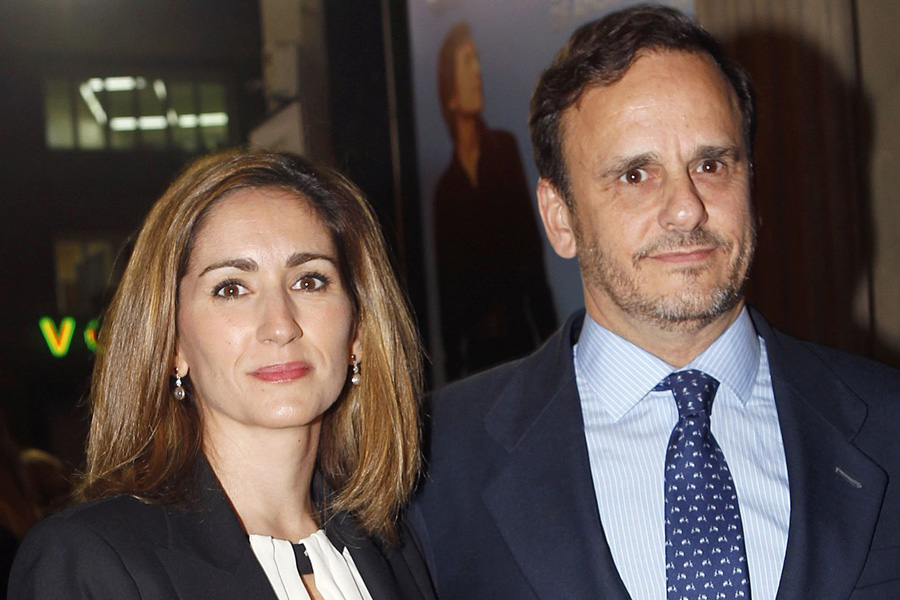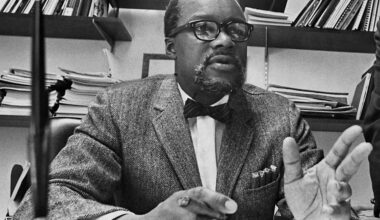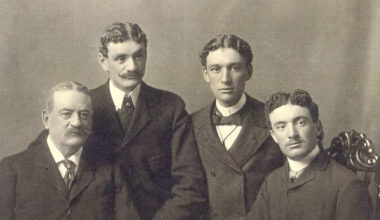Basic Information
| Field | Details |
|---|---|
| Full Name | Alejandra Martos Figueroa |
| Date of Birth | August 29, 1974 |
| Place of Birth | Madrid, Spain |
| Nationality | Spanish |
| Occupation | Art conservator-restorer (painting specialization) |
| Years Active | c. 1990s–present |
| Employer | Museo Nacional Thyssen-Bornemisza (Madrid) |
| Known For | Long-term painting conservation work; public restoration of Carpaccio’s Young Knight in a Landscape |
| Parents | Raphael (Miguel Rafael Martos Sánchez) and Natalia Figueroa |
| Siblings | Jacobo (1973), Manuel (1981) |
| Marital Status | Divorced (married 2001; divorced c. 2019) |
| Children | Manuela (b. c. 2003), Carlos (b. c. 2006) |
| Heritage | Artistic and aristocratic lineage on mother’s side; Andalusian roots on father’s side |
| Public Profile | Low; minimal social media; media mentions tied to family and museum work |
Biography and Early Life
Born in Madrid on August 29, 1974, Alejandra Martos Figueroa grew up where rehearsals, manuscripts, and canvases were as common as schoolbooks. Her father, the legendary singer Raphael, and her mother, journalist and writer Natalia Figueroa, created a home where artistry was daily bread and discretion a family creed. The broader family story blends the popular and the patrician—Andalusian grit on the paternal side, aristocratic lineage on the maternal—giving Alejandra a 360-degree view of Spanish culture from living room to stage to salon.
She first imagined herself a dancer, drawn to the disciplined poise of ballet. But at 16, a different stage called: watching conservators work on paintings at home, she recognized a vocation. Conservation offered the alchemy she craved—science, craftsmanship, history, and a devotion to fidelity over flourish. The desire to repair rather than to perform became her compass.
A childhood buffered from tabloid glare meant ordinary routines—studying, museums, family meals—ran alongside extraordinary experiences, like seeing world-class art up close. The values emphasized at home—work, humility, and kindness—anchored a life that would later reject celebrity in favor of steady, meticulous practice.
Family and Relationships
Alejandra’s family is a close-knit constellation. Her parents married in 1972 in Venice, a union that has weathered fame and time with quiet resilience. Siblings Jacobo and Manuel also chose creative paths—direction and production—complementing the family’s artistic architecture.
She married businessman Álvaro de Arenzana y Jové in 2001 in a widely attended celebration at her parents’ home. The marriage, which lasted close to two decades, brought two children—Manuela and Carlos—and ended discreetly around 2019. Reports consistently describe the separation as amicable and private, reflecting the family’s preference for low-key transitions over spectacle.
In 2024, intimate photos from her 50th birthday offered a rare public glimpse of the trio of siblings together, a testament to family unity. When her father faced a brain cancer diagnosis in late 2024, Alejandra’s presence was steady and constructive; she shared measured, optimistic updates, reflecting a family that manages crisis with dignity.
Family Snapshot
| Name | Relation | Notable Details |
|---|---|---|
| Raphael (Miguel Rafael Martos Sánchez) | Father | Iconic Spanish singer; underwent treatment for brain cancer in late 2024 |
| Natalia Figueroa | Mother | Journalist and writer; aristocratic lineage |
| Jacobo Martos | Brother | Director and producer |
| Manuel Martos | Brother | Producer; active in music and audiovisual projects |
| Álvaro de Arenzana y Jové | Ex-husband | Businessman; married 2001, divorced c. 2019 |
| Manuela | Daughter | Born c. 2003; artistic inclinations |
| Carlos | Son | Born c. 2006; low public profile |
Career and Achievements
To understand Alejandra’s work is to understand reverence. For more than two decades at the Museo Nacional Thyssen-Bornemisza, she has moved quietly among masterpieces, stewarding canvases through time’s inevitable stress tests. Her specialty is painting conservation, a discipline that demands patience, discipline, and the humility to go unnoticed.
Her projects span centuries and schools:
- A public, year-and-a-half conservation of Vittore Carpaccio’s Young Knight in a Landscape, which invited visitors to witness the slow choreography of restoration.
- Interventions on Paul Gauguin’s Mata Mua and Vincent van Gogh’s Les Vessenots, where color, varnish, and structure demand exacting respect.
- Structural work on pieces by Ernst Ludwig Kirchner, in which the support itself becomes a patient.
- Current technical studies on Edgar Degas pastels, where fragility is part of the aesthetic.
Her working philosophy is clear: restoration must safeguard the original and never impersonate it. Ethical practice is her north star—preserve, stabilize, reveal—but do not rewrite. She often describes the role as both a privilege and a responsibility, a balance between handcraft and scholarship.
Selected Restorations and Research
| Artwork | Artist | Period | Role | Notes |
|---|---|---|---|---|
| Young Knight in a Landscape | Vittore Carpaccio | Renaissance | Lead/restorer | Public restoration over c. 18 months; visitor-facing process |
| Mata Mua | Paul Gauguin | Post-Impressionism | Conservation | Chromatic stabilization; ethical reintegration |
| Les Vessenots | Vincent van Gogh | Post-Impressionism | Conservation | Varnish and paint-layer care; structural review |
| Various works | Ernst Ludwig Kirchner | Expressionism | Structural/Support work | Reinforcement of support and ground layers |
| Pastels (various) | Edgar Degas | 19th century | Technical study | Material analysis; preventive conservation strategy |
Working Philosophy
She treats the canvas as a living document. Material speaks—a crack, a blanching varnish, a brittle ground—each a word in a long sentence that began in the artist’s studio and continues in the museum. Her approach can be distilled into a few principles:
- Respect for material authenticity over cosmetic perfection.
- Minimal intervention with maximum stability.
- Documentation and reversibility as non-negotiables.
- Public engagement when it illuminates process without compromising the work.
Media Presence and Public Life
Alejandra maintains a purposefully low profile. She is not a staple of red carpets or talk shows. Social media, if present, is private and sparse. When she appears in headlines, it is generally through her family—milestones, health updates, or reflective features—or through her museum work, which occasionally draws the press when a major piece undergoes treatment.
In 2024–2025, coverage touched on her 50th birthday celebration and her father’s health journey. A magazine profile highlighted her craft and the values inherited from her parents: be good, work hard, keep perspective.
Timeline
- 1974: Born in Madrid on August 29.
- Late 1980s: At 16, discovers art restoration observing conservators at work.
- 1990s: Begins professional path in conservation; early projects in painting.
-
- 2000–2001: Joins Museo Nacional Thyssen-Bornemisza; marries in 2001.
-
- 2003 and c. 2006: Birth of daughter Manuela and son Carlos.
-
- 2019: Divorce concluded quietly.
- 2023–2024: High-visibility public-facing restoration projects; family event appearances limited.
- 2024: Turns 50 in August; provides optimistic updates on father’s late-2024 health treatment.
- 2025: Feature coverage spotlights her ethical approach to conservation.
Personal Notes and Values
Alejandra’s life reads like a study in controlled light: soft yet revealing, precise without ostentation. She is proud of the craft’s teamwork and the interdependence between science, art history, and the restorer’s trained hand. She advocates for women’s visibility in the arts ecosystem and has aligned with initiatives that champion their leadership. The lodestar remains the same: protect what was made, and let the artist’s voice—not the restorer’s—be the one that endures.
FAQ
Who is Alejandra Martos Figueroa?
She is a Spanish art conservator specializing in painting restoration and the daughter of singer Raphael and journalist Natalia Figueroa.
Where does she work?
She has worked for more than two decades at the Museo Nacional Thyssen-Bornemisza in Madrid.
What is she best known for professionally?
Notably for the public restoration of Carpaccio’s Young Knight in a Landscape and conservation work on pieces by Gauguin, Van Gogh, Kirchner, and Degas.
When was she born?
She was born on August 29, 1974, in Madrid, Spain.
Is she active on social media?
Her social media presence is minimal and private; she does not maintain a public-facing profile.
Is there any controversy associated with her?
No; her public profile is low and media coverage remains positive and family- or museum-focused.
Is she married?
She married in 2001 and later divorced around 2019; the split was handled discreetly.
Does she have children?
Yes, two: Manuela (born circa 2003) and Carlos (born circa 2006).
How is she connected to the arts beyond restoration?
Her entire family is steeped in the arts—her father is a renowned singer, and her brothers work in film and music.
What guides her restoration philosophy?
Ethical, minimal, and reversible interventions that preserve authenticity without imitating the artist.



